To Glute or Not to Glute in Yoga Backbends
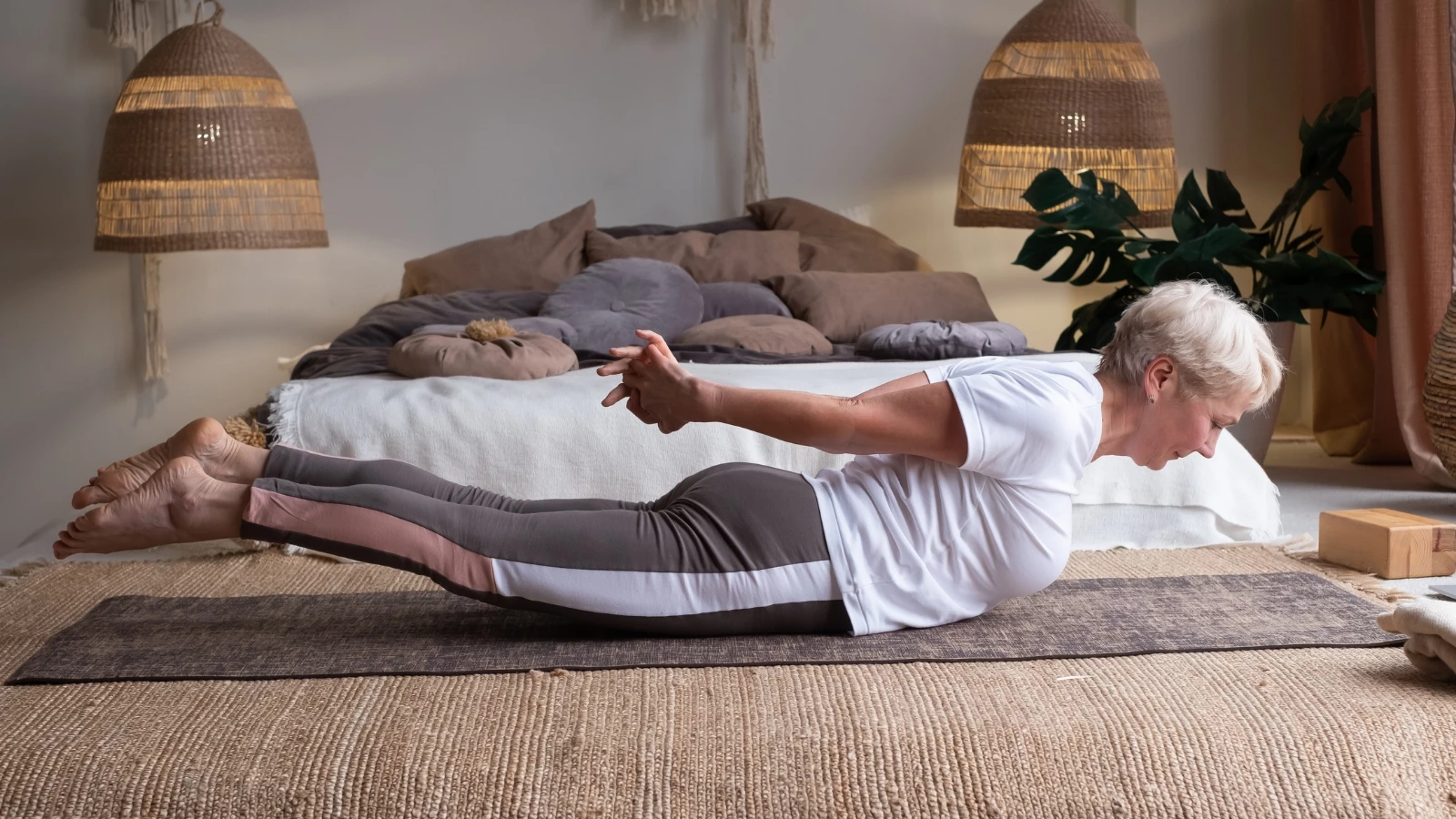
The glutes’ role in backbends
One of the biggest debates in the yoga world is whether or not to contract the glutes during backbends. We often hear teachers encourage contraction of the glutes while other teachers strongly discourage it. So should we contract our gluteal muscles when we practice backbends or not? What is the glutes’ role in backbends?
The gluteal muscles are often grouped together, but their primary functions are quite different. When it comes to the debate about the glutes and backbends, we are really referring to the gluteus maximus (the superficial, meaty muscle that covers the bulk of the buttocks). The gluteus maximus is the primary muscle of hip extension.
Hip extension happens anytime we increase the angle between the thigh and the front of the pelvis. Standing would be considered hip extension, but a greater hip extension occurs in yoga when we move into backbends.
What Are the Hip Extensors?
As noted, the gluteus maximus is our primary hip extensor. The hamstring muscles are also synergists (or helpers) in hip extension. (There are also other muscles that work to create hip extension, but for the purposes of simplicity, we won’t discuss those here.)
The yoga practice tends to heavily favor forward folds (otherwise known as hip flexion). In a simple Sun Salutation A, we practice five forward folds as compared to only one backbend! So in yoga, we spend a great deal of time stretching our hip extensors, and very little time consciously engaging them.
We often focus on lengthening the hamstrings. And while this is valid and necessary and holds its place in our yoga practice, it is also important to counter this work with the opposite action—strengthening the hamstrings and other hip extensor muscles.
This is where practices like activating the gluteus maximus and hamstrings in backbends come into play.
So Then Why Do Some Teachers Discourage Activation of the Glutes in Backbends?
Because nothing is ever so simple in life (and certainly not in anatomy!), this is where things get tricky. The gluteus maximus and the hamstrings are strong hip extensors. But, they are also strong external rotators of the hip.
For most practitioners, in backbends, we prefer to not create external rotation in the hips because this can cause a “clenching” of the gluteus maximus around the sacroiliac joints and create a compressive feeling (or even pain) in the pelvis and lower back.
So, the art of activating the gluteus maximus properly in backbends lies in the ability to finesse the actions of the muscle to be able to create hip extension without external rotation. This is ideally the glutes’ role in backbends. The secret to this lies in creating familiarity and strength in the hip extensions.
Try This Sequence to Build Strength in Your Hip Extensor
The following sequence helps to build strength in the hip extensors and isolate the actions of these muscles to create pure hip extension, without the unwanted external rotation when we practice backends.
How to Practice Half-Locust Pose (Legs Only)
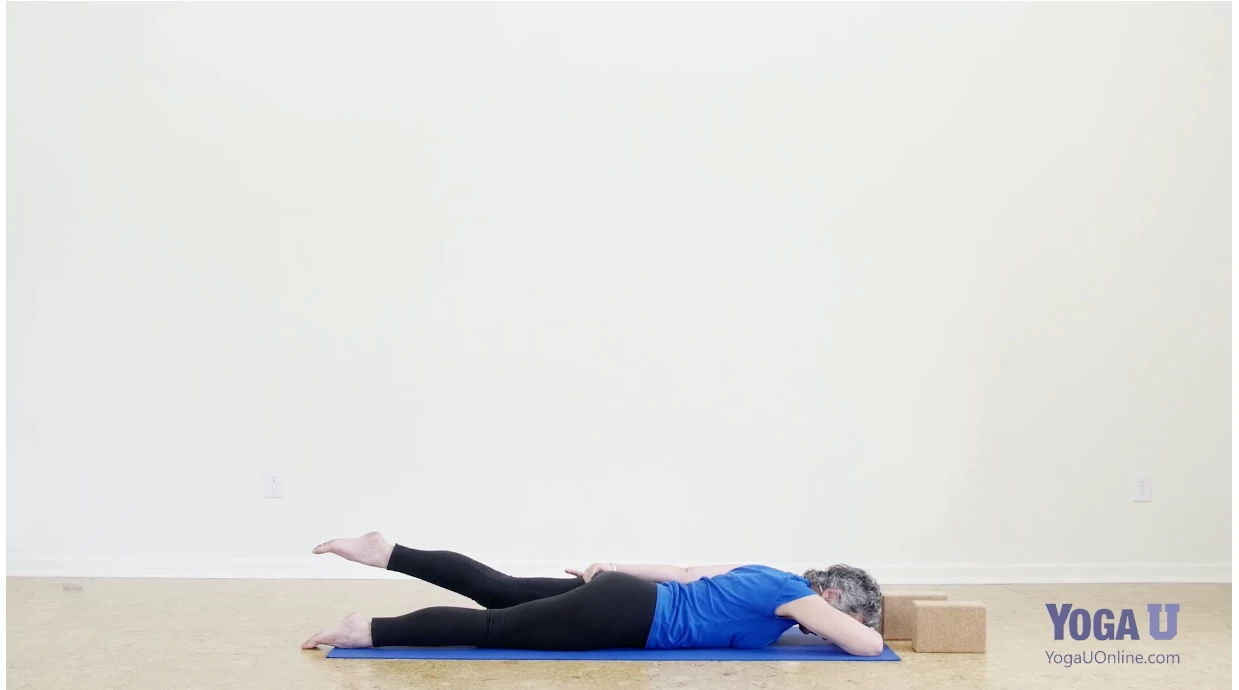
This exercise works to strengthen the gluteus maximus and hamstrings by creating hip extension against the constant pull of gravity.
To practice:
- Start lying flat on your belly. You can make a pillow with your arms to rest your forehead on top of. Point your toes back behind you.
- Elongate your spine and neutralize your pelvis.
- Integrate and activate your core to brace your movements. Three-dimensionally “corset” your waistline and draw your navel in and up toward your spine.
- Without movement, energetically hug your legs toward the midline of your body.
- Visualize a string attached to your inner thigh and lift your right leg off the floor as if being pulled up by this string. Lift from your inner thigh so that you do not externally rotate your leg as you lift.
- You can bring one hand to touch the bony protrusions at the base of your pelvis (your sitting bones, or ischial tuberosities) to feel the contraction of your hamstrings. You can feel the same contraction in your gluteus maximus by bringing one hand to rest lightly over your buttocks.
- Slowly lower and release your leg back down and work the same actions on the opposite side.
- Repeat these actions a few times.
Leg Extension From Table Top Pose (Bird Dog or Hunting Dog Pose)
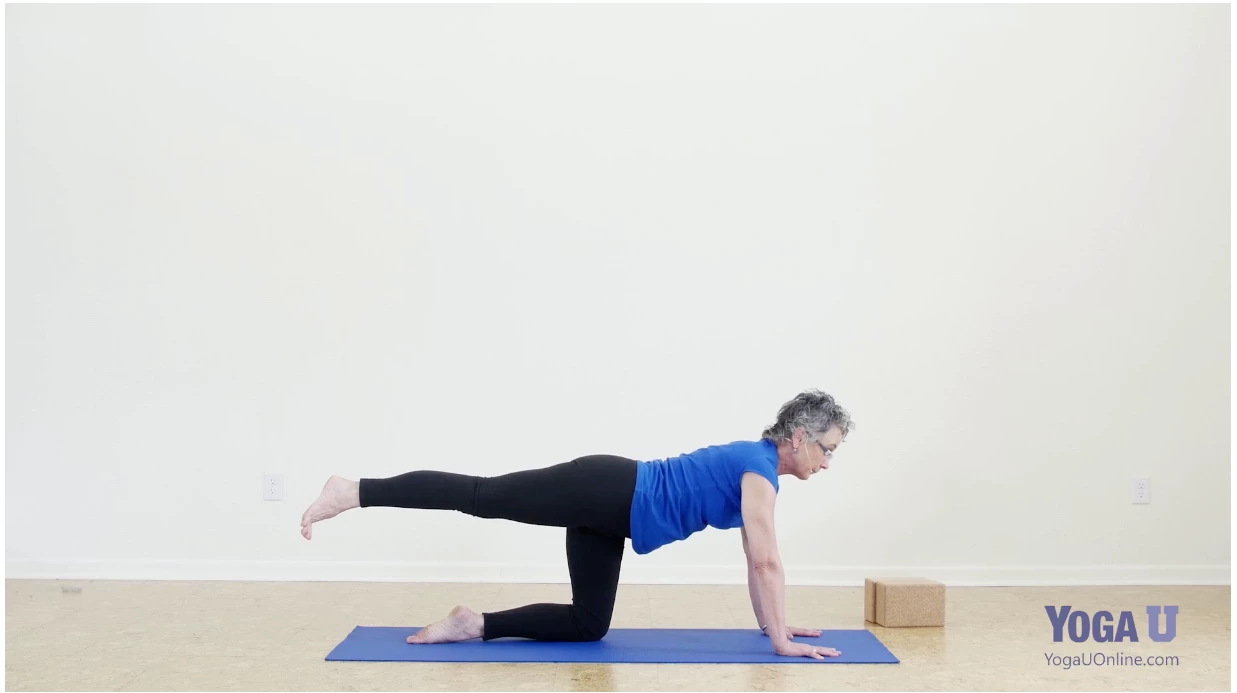
This posture works similar actions (and muscles) to the previous pose, although this time in a slightly higher orientation.
To practice:
- Start in a tabletop position on all fours. Align your shoulders over your wrists and your hips over your knees. Spread your fingers wide and press evenly into the corners of your palms to activate hasta bandha.
- Integrate and activate your core by hugging in three-dimensionally toward the midline of your body.
- Stretch your right toes toward the back of your mat and pause for a moment to realign here. Press evenly into your palms and re-integrate your core. Spiral your leg slightly inward to create a neutral alignment so that you are not externally rotating.
- Once you feel comfortable, again lift from your inner thigh to elevate your right foot off the floor and extend it straight back behind you at roughly the height of your hip. Reach energy back through your right foot. Spread your toes, flex your ankle, and press out through the ball of your foot.
- If you feel stable and comfortable here, you may wish to lift your left arm off the floor and turn your palm to face the center of your mat. Reach and extend out from your toes all the way out through your fingertips.
- Hold for a few deep breaths before slowly releasing and switching sides.
How to Practice Warrior III ( Virabhadrasana III Pose)

Another posture of hip extension, Warrior III adds balance and even more height to your hip extensor exercises.
To practice:
- Start in a Half Lift with a yoga block underneath each hand. Rise to your fingertips and create length in your spine. Draw your torso roughly parallel to the floor.
- Activate and integrate your whole core.
- Shift your weight into your left leg and rise to the ball of your right foot.
- When you feel stable, sweep your right foot back and rest your right toes on the floor behind you.
- Maintain length in your spine and activation in your core and lift from your inner thigh to reach your right leg straight back behind you at roughly the height of your hip.
- Kick back firmly through your right foot and maintain the neutral alignment of your right hip. Strive to not externally rotate your hip. Level your hips to the floor and point the toes of your right foot toward your mat.
- You may wish to lift your hands off the blocks and draw them to your hips, your heart, or straight forward in front of you framing your face.
- Hold for a few deep breaths before slowly releasing and then switch sides.
How to Practice Bridge Pose to explore The glutes’ role in backbends
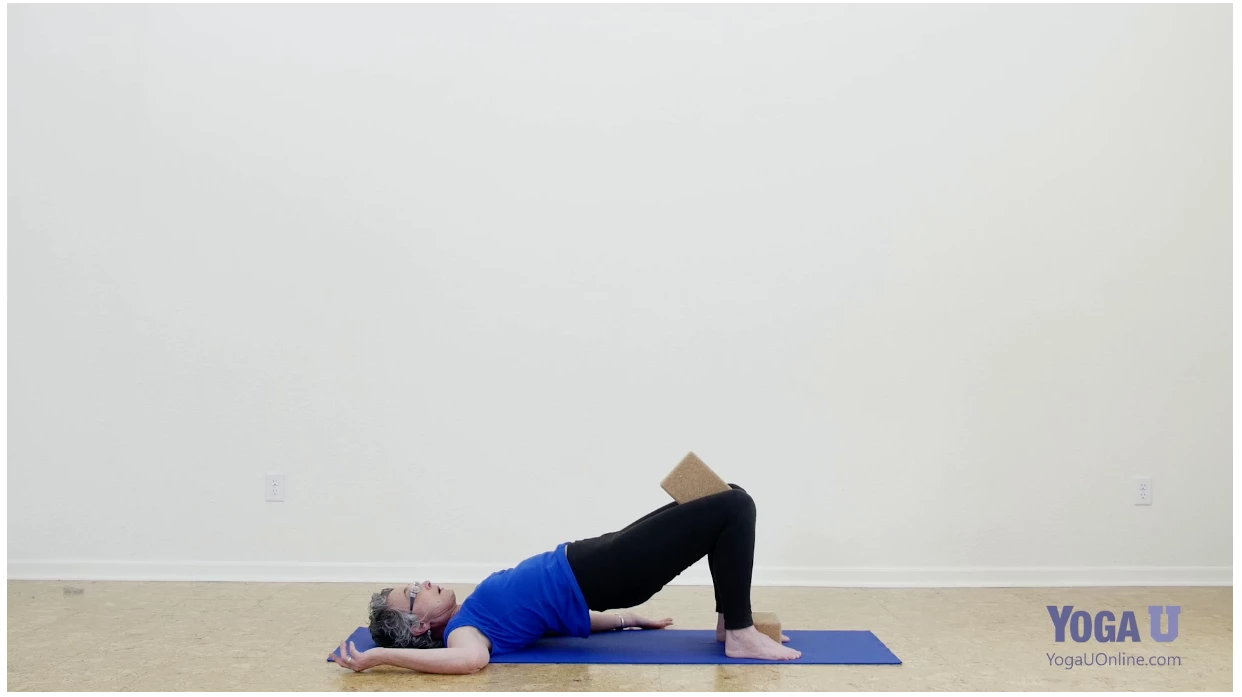
As a gentle backbend, Bridge Pose helps to lay the foundation for the engagement that you want in your hip extensors in all other backbends.
To practice:
- Start lying down on your back with your knees bent and your feet roughly hip-distance apart.
- Neutralize your pelvis and your hips. Integrate and activate your core.
- Place a block on its widest setting between your feet and squeeze your feet evenly in toward the block.
- Hug another block between your knees on whichever setting feels appropriate for you.
- Release your arms by your sides and turn your palms to face the sky.
- Lift your tailbone off the floor to engage your hamstrings.
- Slowly roll up your whole spine and lift your pelvis up about halfway toward the sky.
- Reverse that action and slowly roll back down to your back.
- Continue rolling up and down while maintaining a subtle but strong activation of your gluteus maximus and your hamstrings.
- You may choose to continue lifting up into your lower Half-Bridge or you may wish to lift your hips slightly higher—to your maximum height.
Savasana Pose How to Practice Tips
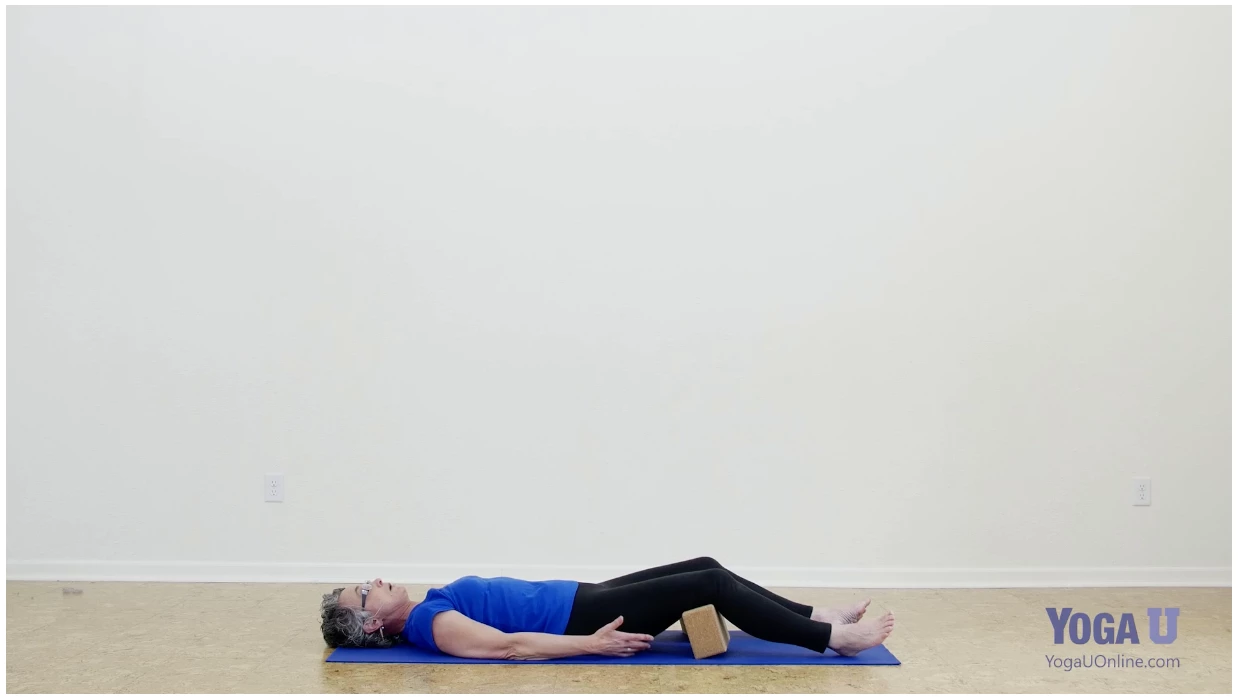
It’s always wise to finish practice with Savasana because it’s during our rest time that our body absorbs new patterns and lessons. After a backbending practice, it’s nice to practice Savasana with a soft bend in your knees to lengthen your spine.
To practice:
- Lie down flat on your back with a bolster, rolled blanket, or angled blocks underneath your knees or your thighs.
- Soften your lower back and relax the muscles surrounding your pelvis.
- Release your arms by your sides, close your eyes, and surrender to your final resting pose.
Hip Extensors Are Powerful Muscles to Utilize in Backbends
Our hip extensors, including the gluteus maximus and hamstrings, are powerful muscles to use during backbends. But these muscles are often overstretched and underworked in our yoga practice.
So incorporating some or all of the above postures into your regular yoga practice is wise to learn to use these important muscles as well as to build strength in them.
The glutes as well as the hamstrings are important players in yoga postures that use hip extension (like backbends). But remember when backbending, to strive to isolate their actions to create pure hip extension without external rotation.
If you learn to properly utilize the gluteus maximus and hamstrings in your backbending practice, you’ll likely be pleasantly surprised by how much more stable and enjoyable your backbends can become.
Hip Extensors and Backbending: The glutes’ role in backbends
Also, read...
Change Your Perspective of Pelvic Tilting: How the Transversus Abdominis Can Help
4 Ways to Practice Locust Pose
5 Keys to Healthy Neck Alignment in Cobra Pose (Bhujangasana)
Related courses
Breath as Medicine: Yogic Breathing for Vital Aging
Yoga and Myofascial Release: Releasing Chronic Tension with the Bodymind Ballwork Method
Yoga and Detoxification: Tips for Stimulating Lymphatic Health

Leah Sugerman is a yoga teacher, writer, and passionate world traveler. An eternally grateful student, she has trained in countless schools and traditions of the practice. She teaches a fusion of the styles she has studied with a strong emphasis on breath, alignment, and anatomical integrity. Leah teaches workshops, retreats, and trainings, both internationally and online. For more information, visit www.leahsugerman.com.



